Abstract
Antibiotic-resistant Staphylococcus aureus strains of phage type 88, lysogenic for phage 188, when grown in mixed culture with a nonlysogenic novobiocin-resistant strain, acquired novobiocin resistance at a high rate from the nonlysogenic strain. With most strains of phage type 88, there was no detectable transfer of resistance from lysogenic to nonlysogenic cells. Lysogenization with phage 188 of phage-sensitive strains conferred on the lysogenized cells the ability to acquire chromosome and plasmid resistance markers. The acquisition of novobiocin resistance in liquid cultures depended on the aeration of the culture, cell density, and the presence of Ca2+. Pronase, and to a lesser degree other proteinases, increased the rate of acquisition of chromosome- and plasmid-determined resistance markers by cells lysogenic for phage 188.
Full text
PDF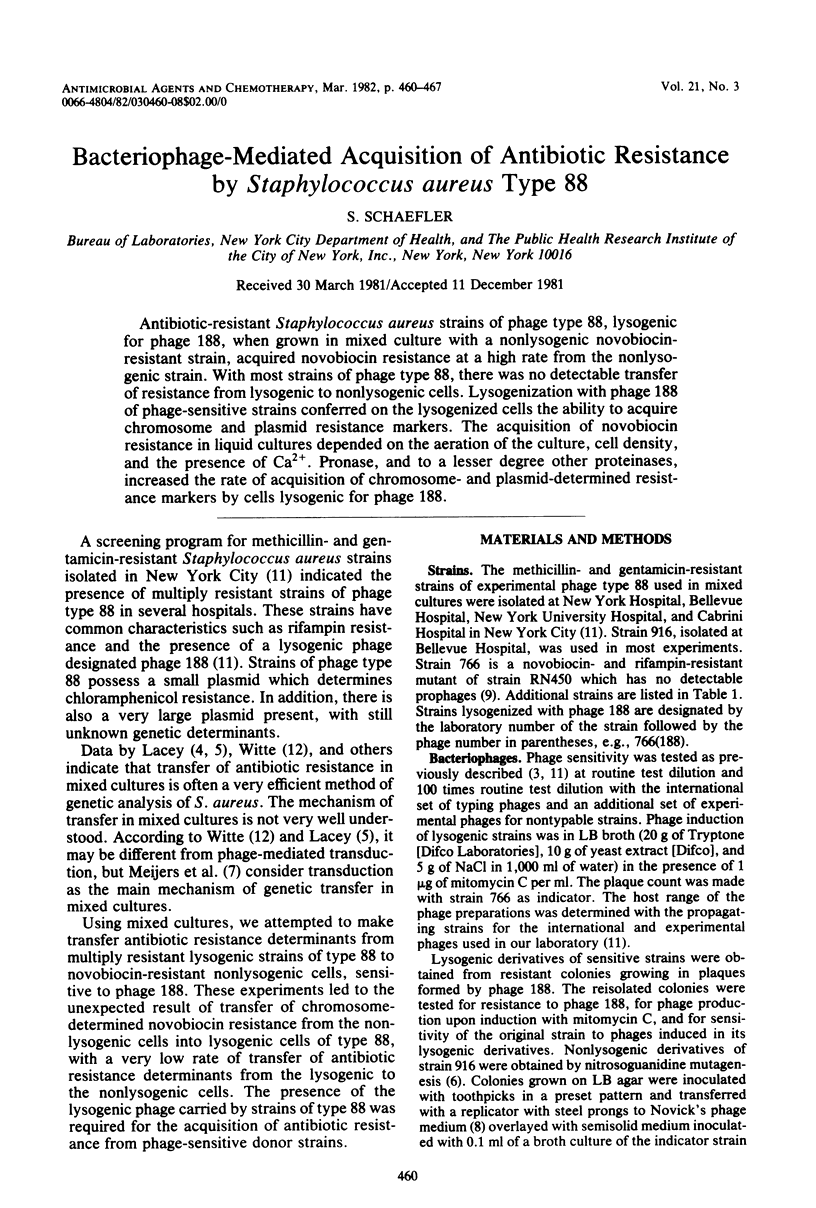
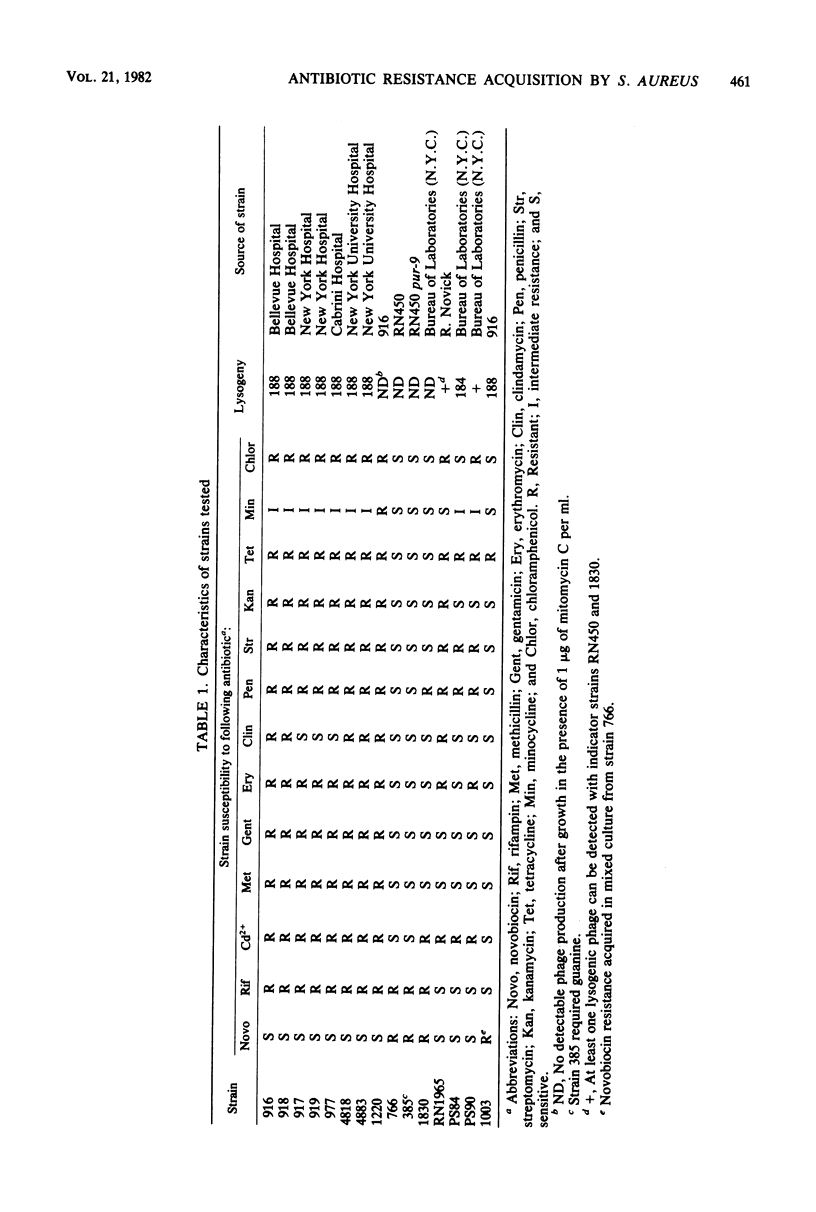
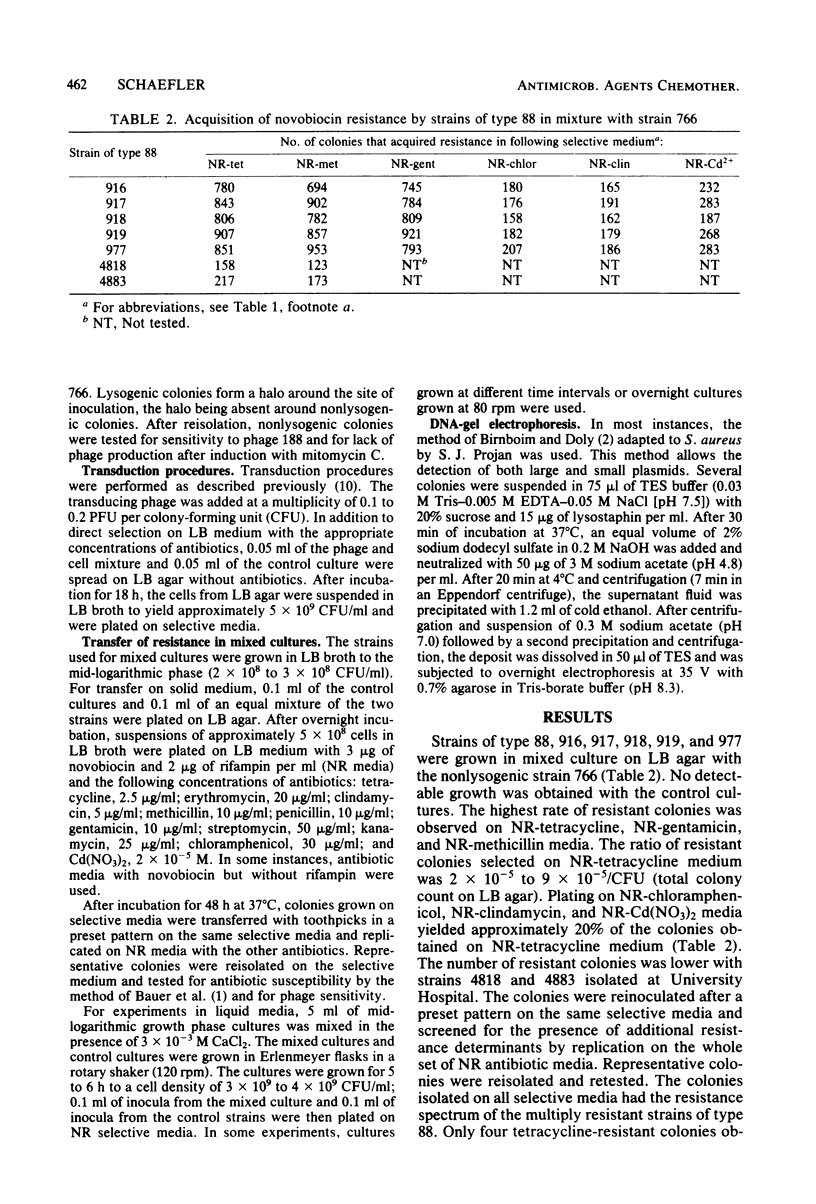
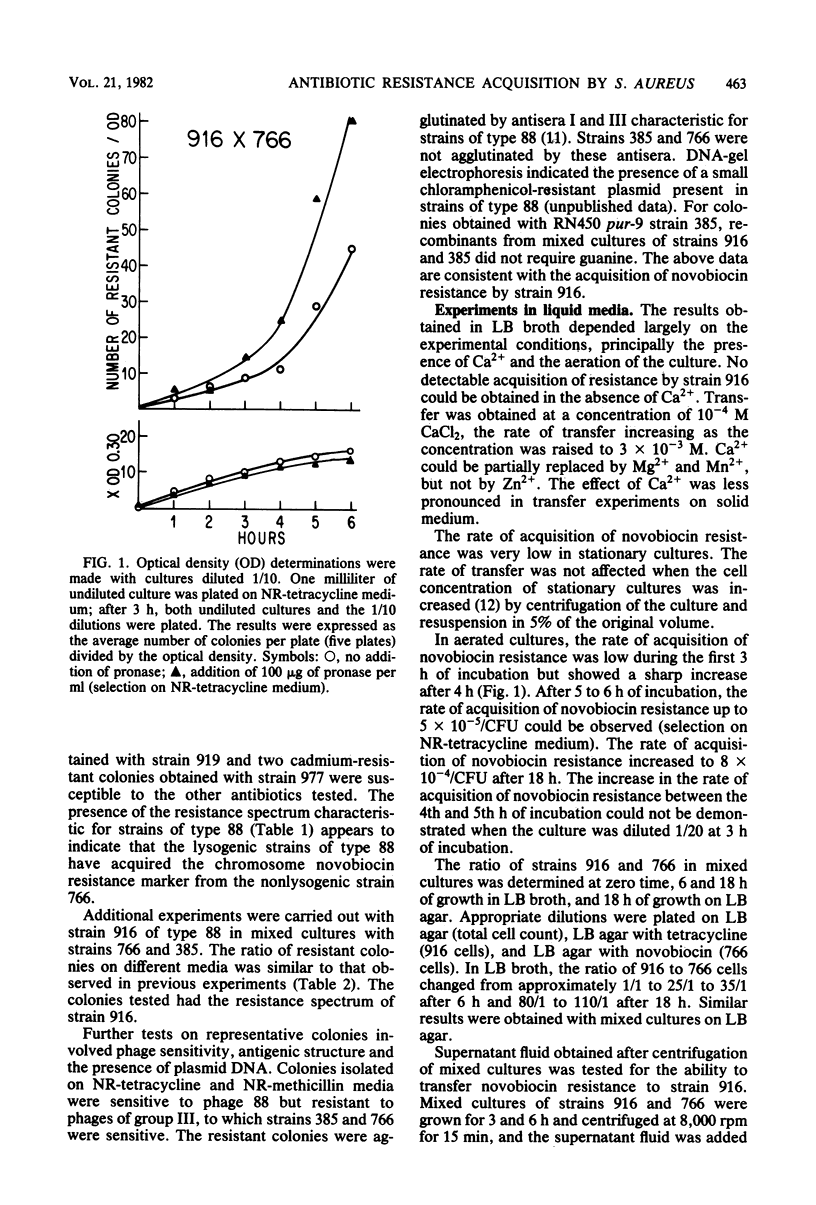
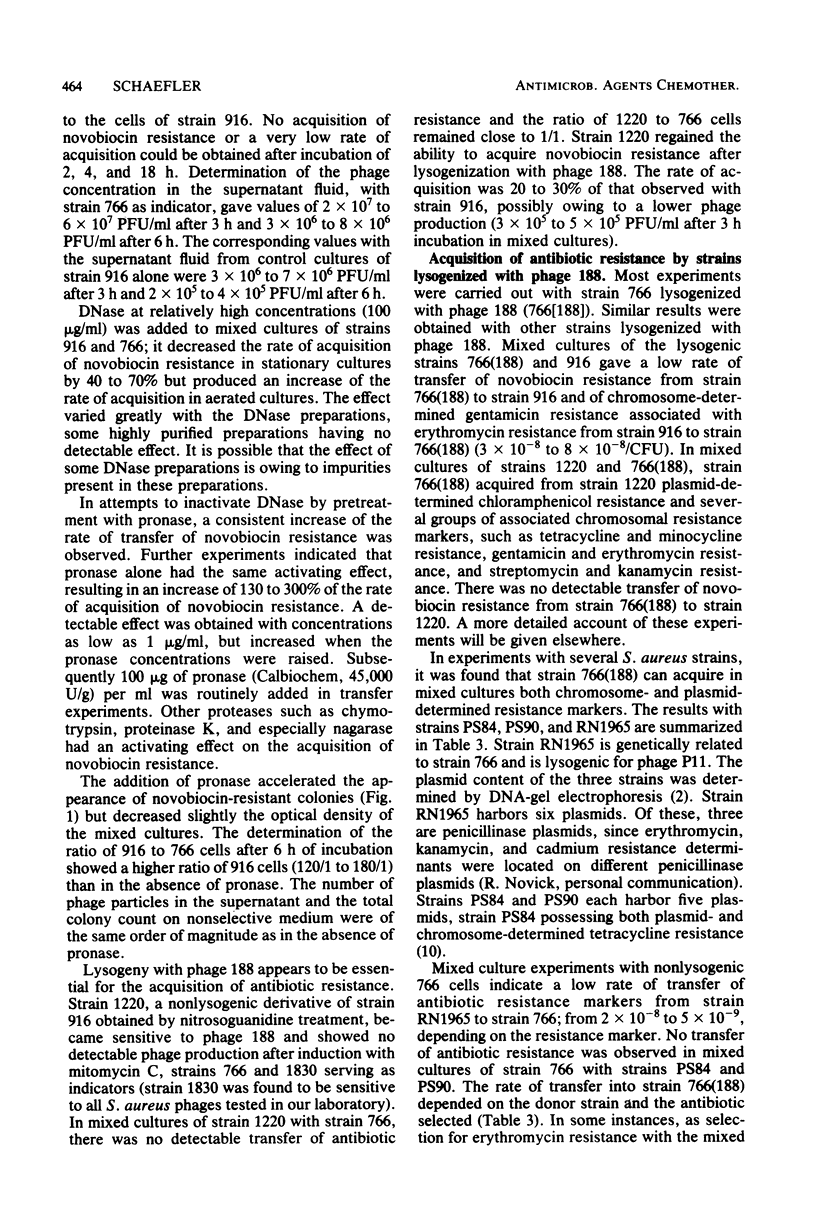


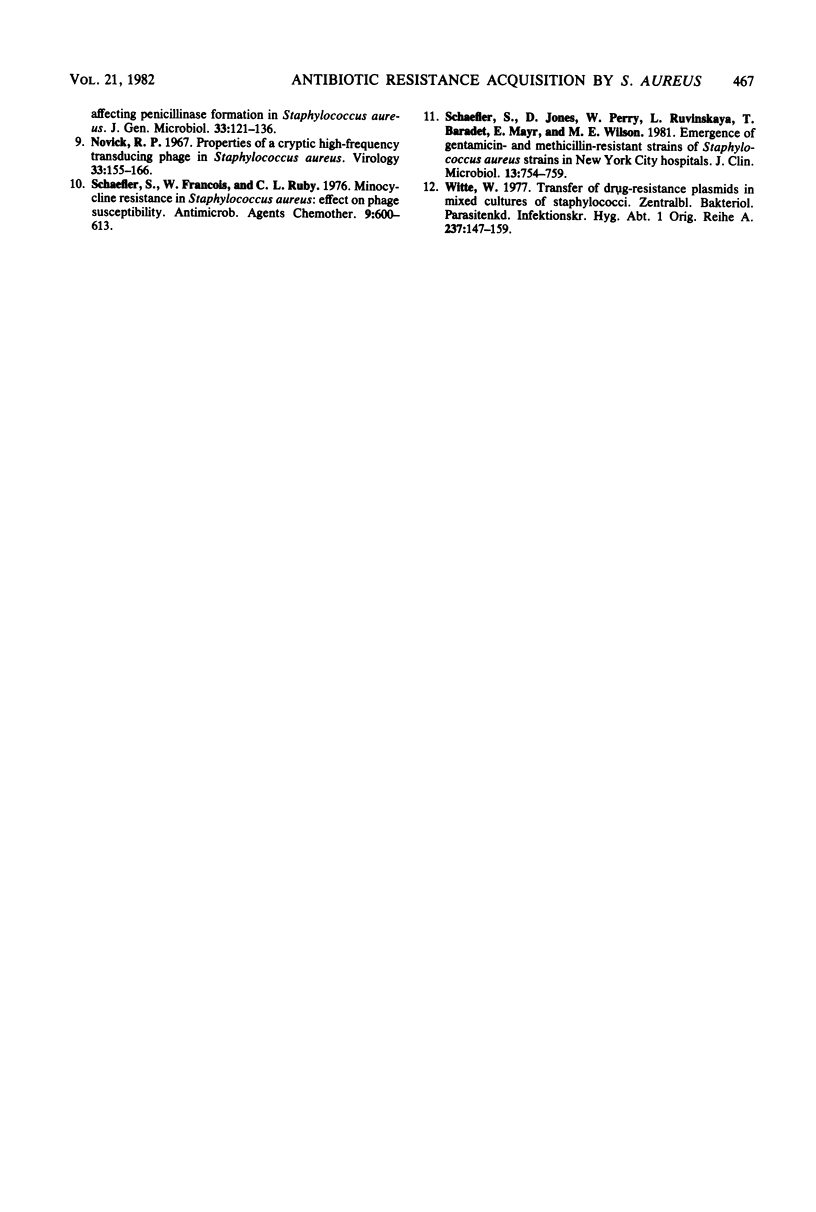
Selected References
These references are in PubMed. This may not be the complete list of references from this article.
- Bauer A. W., Kirby W. M., Sherris J. C., Turck M. Antibiotic susceptibility testing by a standardized single disk method. Am J Clin Pathol. 1966 Apr;45(4):493–496. [PubMed] [Google Scholar]
- Birnboim H. C., Doly J. A rapid alkaline extraction procedure for screening recombinant plasmid DNA. Nucleic Acids Res. 1979 Nov 24;7(6):1513–1523. doi: 10.1093/nar/7.6.1513. [DOI] [PMC free article] [PubMed] [Google Scholar]
- Lacey R. W. Evidence for two mechanisms of plasmid transfer in mixed cultures of Staphylococcus aureus. J Gen Microbiol. 1980 Aug;119(2):423–435. doi: 10.1099/00221287-119-2-423. [DOI] [PubMed] [Google Scholar]
- Lacey R. W., Stokes A. Studies on recently isolated cultures of methicillin-resistant Staphylococcus aureus. J Gen Microbiol. 1979 Oct;114(2):329–339. doi: 10.1099/00221287-114-2-329. [DOI] [PubMed] [Google Scholar]
- Lacey R. W. Transfer of tetracycline-resistance between strains of Staphylococcus aureus in mixed cultures. J Gen Microbiol. 1971 Dec;69(2):229–237. doi: 10.1099/00221287-69-2-229. [DOI] [PubMed] [Google Scholar]
- Meijers J. A., Winkler K. C., Stobberingh E. E. Resistance transfer in mixed cultures of Staphylococcus aureus. J Med Microbiol. 1981 Feb;14(1):21–39. doi: 10.1099/00222615-14-1-21. [DOI] [PubMed] [Google Scholar]
- NOVICK R. P. ANALYSIS BY TRANSDUCTION OF MUTATIONS AFFECTING PENICILLINASE FORMATION IN STAPHYLOCOCCUS AUREUS. J Gen Microbiol. 1963 Oct;33:121–136. doi: 10.1099/00221287-33-1-121. [DOI] [PubMed] [Google Scholar]
- Novick R. Properties of a cryptic high-frequency transducing phage in Staphylococcus aureus. Virology. 1967 Sep;33(1):155–166. doi: 10.1016/0042-6822(67)90105-5. [DOI] [PubMed] [Google Scholar]
- Schaefler S., Francois W., Ruby C. L. Minocycline resistance in Staphylococcus aureus: effect on phage susceptibility. Antimicrob Agents Chemother. 1976 Apr;9(4):600–613. doi: 10.1128/aac.9.4.600. [DOI] [PMC free article] [PubMed] [Google Scholar]
- Schaefler S., Jones D., Perry W., Ruvinskaya L., Baradet T., Mayr E., Wilson M. E. Emergence of gentamicin- and methicillin-resistant Staphylococcus aureus strains in New York City hospitals. J Clin Microbiol. 1981 Apr;13(4):754–759. doi: 10.1128/jcm.13.4.754-759.1981. [DOI] [PMC free article] [PubMed] [Google Scholar]
- Witte W. Transfer of drug-resistance-plasmids in mixed cultures of Staphylococci. Zentralbl Bakteriol Orig A. 1977;237(2-3):147–159. [PubMed] [Google Scholar]


